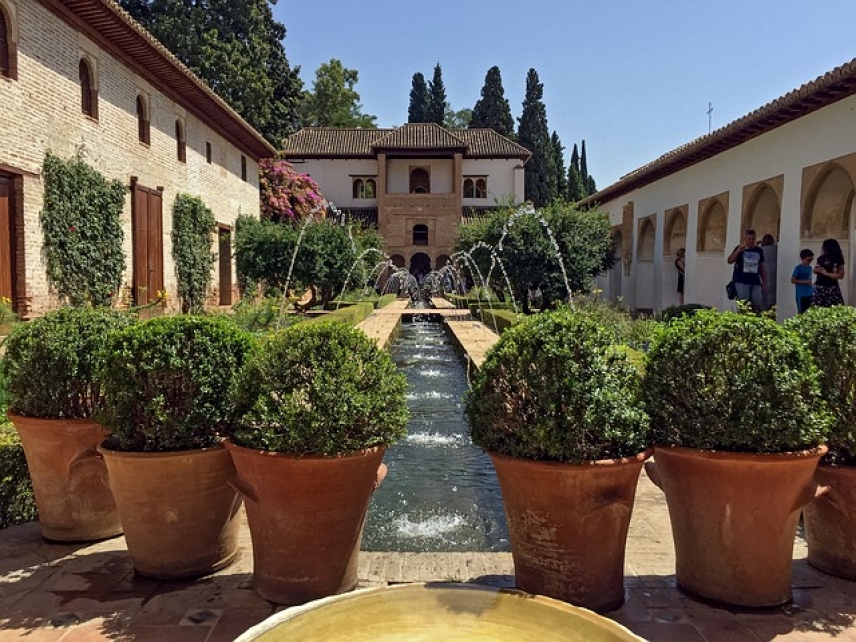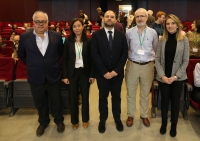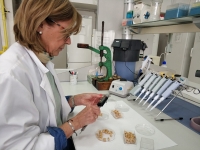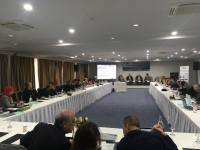Un ciclo de conferencias analiza los retos de la ecología forestal frente al cambio climático
Escrito por UCCiRubén Delgado Manzanedo, investigador postdoctoral en la Universidad de Harvard, y Ricardo Valentini, miembro del Grupo Intergubernamental de Expertos sobre el Cambio Climático, entre los ponentes
Un encuentro internacional recupera la historia de la vid en Al Andalus
Escrito por UCC+iLa Alhambra acogerá el Simposium donde se tratarán de derribar falsas creencias sobre el vino el islam andalusí
La vid fue uno de los cultivos más relevantes en los territorios agrícolas andalusíes, a pesar de la idea generalizada de que la prohibición coránica de consumir vino la hubiera relegado a un papel sin importancia. Ésa es la premisa sobre la que se desarrollará el Simposio “La Vid en al-Andalus”, que se celebrará los días 25 a 27 de marzo en el Palacio Carlos V, con el patrocinio del Patronato de la Alhambra y el Generalife y de la Universidad de Granada. Un encuentro en el que se darán a conocer parte de los resultados del proyecto de investigación “Los naturalistas andalusíes y su papel en la recuperación del patrimonio etnobotánico” y en el que un equipo multidisciplinar e internacional de expertos en viticultura, enología, filología, antropología, historia de la agricultura y de las plantas cultivadas, junto a especialistas en Ciencia y Agronomía en al-Andalus, entre los que se encuentra el catedrático de la Universidad de Córdoba Esteban Hernández, debatirá sobre la realidad del cultivo de la vid más allá de los mitos.
Un grupo de especialistas de la medicina y la veterinaria publica una guía sobre enfermedades transmitidas por animales de compañía
Escrito por UCC+iDefiende la necesidad de colaboración entre todos los sectores del ámbito sanitario Las mascotas tienen cada vez más presencia en la vida de los seres humanos lo cual genera un terreno propicio para la transmisión de enfermedades de origen animal.
La UCO acoge el II Simposio Español de Fisiología y Mejora de los Cereales
Escrito por UCC+iLa comunidad científica dialoga en torno a la situación presente y los retos de futuro del cereal en España durante los días 6 y 7 de marzo en Córdoba
La situación actual, en la que se presenta una población con un ritmo constante de crecimiento y un consumo de calorías en aumento sumado a cultivos con menor rendimiento y productividad debido a los efectos del cambio climático, plantea una serie de retos de futuro para el sector cerealista.
Las nuevas variedades de olivo europeas se examinan en Córdoba
Escrito por UCC+iEl Ministerio de Agricultura encomienda a la UCO los exámenes técnicos de las variedades de olivo que aspiran a entrar en el Registro de Variedades Vegetales
El Ministerio de Agricultura, Pesca y Alimentación del Gobierno de España reafirma a la Universidad de Córdoba como la institución encargada de realizar los exámenes técnicos de identificación varietal de olivo para el Registro de Variedades Comerciales y el Registro de Variedades Protegidas para toda la Unión Europea (UE).
Arranca el proyecto europeo ‘GEOMAG’ sobre geomática aplicada a la agricultura y medio ambiente
Escrito por UCC+iLa Universidad de Córdoba, a través del grupo de investigación ERSAF, aportará su experiencia en la teledetección aplicada a la gestión de recursos naturales
La geomática es una disciplina que engloba diferentes métodos de captura, tratamiento y análisis de información geográfica con el propósito de recrear de forma detallada distintas imágenes físicas. El proyecto europeo ‘GEOMAG’, en el que participa la Universidad de Córdoba, acaba de dar su pistoletazo de salida con el objetivo de aplicar las capacidades de esta ciencia a la agricultura y el medio ambiente en Túnez.






